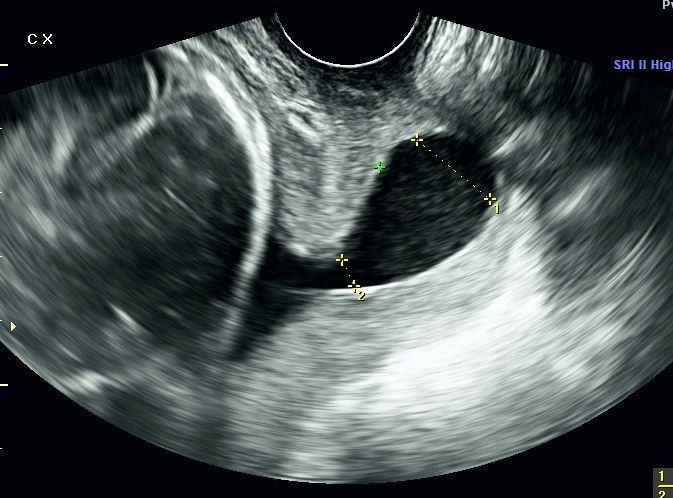Case Study: Hourglassing of Fetal Membranes
Hourglassing of membranes or prolapse of membranes through the internal os into the cervical canal is a difficult condition to manage, as it poses a high risk of rupture of membranes if rescue cerclage is attempted.

A 27 Y/O G2 P0, admitted at 23 weeks gestation with short cervical length of 0.45 cms, large U-shaped funneling and hourglassing of membranes through the internal os into the endocervical canal. She had history of previous first trimester spontaneous abortion and no prior curettage or cervical surgeries. Patient was thus diagnosed with cervical incompetence. Her transvaginal ultrasound depicting prolapsed membranes in shown above (Figure).
Cervical incompetence is emerging as a major cause of preterm deliveries and second trimester losses. Various treatment modalities including cervical cerclage, intramuscular progesterone injections, vaginal progesterone gels or progesterone suppositories are proposed as prophylaxis in patients with previous significant history of second trimester losses. Emergency cerclage is an option when cervix is noted to be shortened on routine transvaginal scans between 16-24 weeks. Some authorities have also recommended screening ultrasounds for cervical lengths in high risk patients.
Hourglassing of membranes or prolapse of membranes through the internal os into the cervical canal is a difficult condition to manage, as it poses a high risk of rupture of membranes if rescue cerclage is attempted. Patients with hourglassing of membranes prior to 24 weeks can be offered surgical or expectant management. Patient should be adequately counseled by perinatologist regarding risks and benefits of surgical management with emergency cerclage versus expectant management with bed rest, antibiotics and tocolysis. If surgical treatment is decided, a preoperative amniocentesis can be performed to decompress and replace prolapsed membranes, followed by McDonald cerclage. Regardless of the management option, these patients have a very high risk of spontaneous rupture of membranes and preterm delivery.
